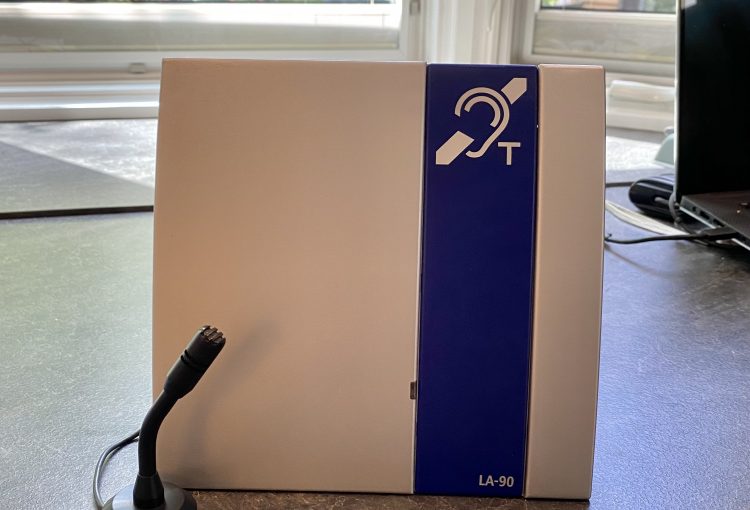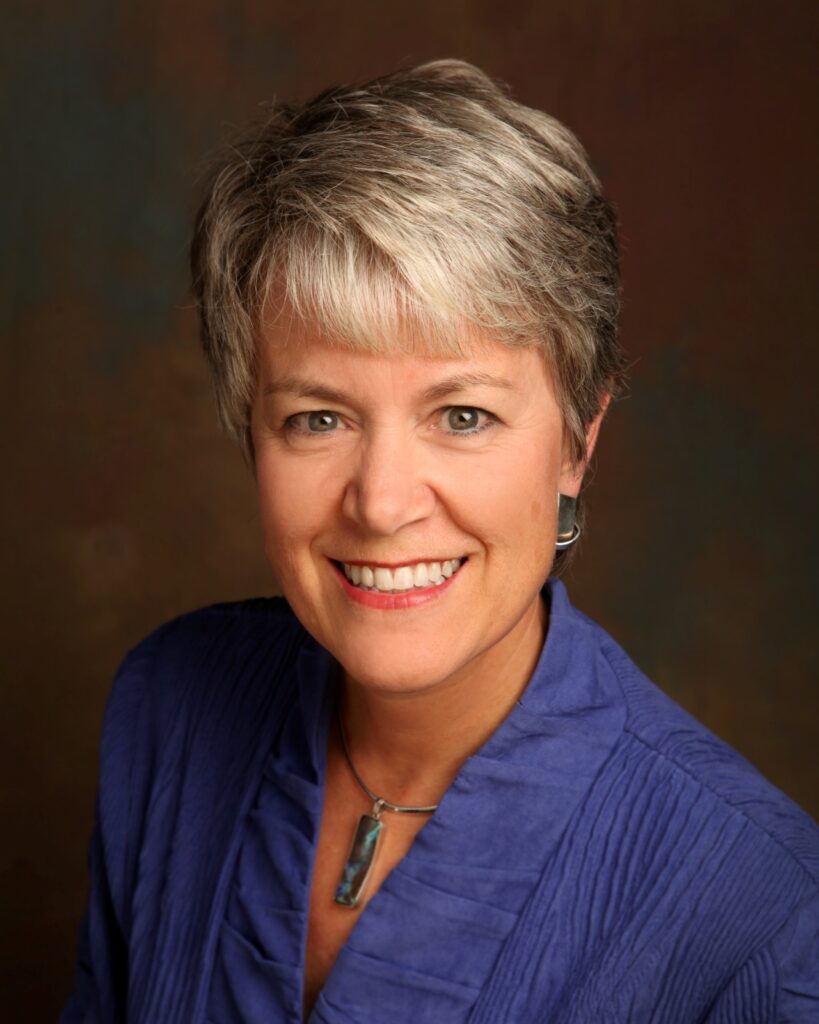
Consumers Still Need Telecoils and Hearing Loops–Even If They Have Bluetooth Hearing Aids
While Bluetooth LE Audio solutions like Auracast may be coming, telecoils and hearing loop systems remain the proven and existing assistive systems for hearing aid users—today.
Originally published 08 August 2022 as a letter to Karl Strom, editor of Hearing Tracker.
By Juliëtte Sterkens, AuD
As an audiologist with over 40 years of experience, I have published numerous articles on the effectiveness and popularity of telecoil-enabled hearing aids and hearing loop systems that make them so valuable to consumers with hearing loss, particularly in public venue applications. More recent media attention has highlighted the development of new Bluetooth technologies, like Auracast, with a veiled implication that the venerable magnetic induction hearing loop systems are on the road to obsolescence.
A recent HearingTracker article by Linda Kozma-Spytek, Trends in Audio Streaming for Hearing Aids and Hearing Aid Compatibility for Wireless Phones provides a good overview of employment of wireless technologies in hearing aids. Drawn from 10 years of HearingTracker data, it suggests more than half (54%) of new hearing aids purchased contain telecoils, while 4 in 5 (80%) contain some form of Bluetooth technology.
However, this could lead readers to jump to some mistaken conclusions. It is important that hearing care professionals, consumers and members of the Hearing Aid Compatibility Task Force understand that while Bluetooth LE broadcast audio systems like Auracast show great promise for telephone compatibility and eventually for public assistive listening systems – the when, where, and how of this promise is yet to be delivered or determined.

Desktop portable hearing loop displaying the international sign for availability of telecoil listening. (External mics improve signal-to-noise ratios for table top loops.)
While the industry develops, tests, and ultimately deploys exciting new broadcast audio technologies, it is critical that hearing aid consumers continue to reap the benefits of hearing aids with proven telecoil technology to connect to telephones AND existing assistive listening systems TODAY.
In my view, misconceptions about connectivity include:
- That every user who has Bluetooth (BT) Connectivity in their hearing instruments actually uses it as their preferred way to couple to the telephone. In actuality, there are many public comments posted in Facebook groups by overwhelmed consumers who complain about their inability to pair, re-pair, or to keep iPhone or Android devices paired to their hearing aids. Additionally, not every hearing aid user owns a mobile phone, and older persons may struggle with new technology.
- That consumers specifically opted out of purchasing hearing aids with telecoils for some unexplained reason(s). In fact, there are many factors that contribute to people not getting telecoils in their hearing instruments, including: a) Their provider didn’t understand or downplayed the benefits of telecoils in favor of BT coupling and rechargeable batteries; b) the brand sold by their provider did not offer a model that included both rechargeability AND telecoils,
or c) they were never told about telecoils in the first place. New HLAA chapter members report rarely being educated about the benefits of telecoils or given a demonstration by their provider. - That consumers do not want telecoils built into their hearing aids. In reality 1 in 3 consumers wanted the ability to access audio broadcasted by hearing loops as shown by another survey by HearingTracker (2018/19) that detailed the hearing aid feature preferences of nearly 15,000 consumers.
Lecture halls, theaters, and other large-area venues where hearing can be difficult due to distance and reverberation are greatly aided by hearing loop systems for users of telecoil-enabled hearing aids and cochlear implants.
Existing universal system
Beyond connecting to a number of existing telephone models, telecoils connect to assistive listening systems that are in use the world over, the value of using telecoils are many:
- They do not affect the power consumption of the instrument;
- They come at very low or no cost to the user, and
- They deliver sound without audible latency, and are very easy to use.
The Americans with Disabilities Act (ADA) requires venues to provide hearing aid compatible assistive listening systems where there is audio amplification, such as government and civic venues, theaters, airports, and train stations, classrooms, etc. Existing ADA-compatible systems are hearing loop, FM, and IR systems—and each of these systems, in different ways, use telecoils to connect audio signals to a person’s hearing aid.
Hearing loops are the gold standard for assistive listening systems because they provide simplicity, immediacy, and reliability. Since 2012, I have worked for the Hearing Loss Association of America (HLAA) and its thousands of members with hearing loss as the National Hearing Loop Advocate. I have personally experienced the benefits hearing loops (that meet the IEC 60118-4 standard) in hundreds of venues and I have witnessed the joy and benefits loops provide its users and venues across the world. To connect to hearing loops directly, all users need is simple access to a telecoil inside their hearing device.
Market trends indicating greater telecoil and hearing loop use
The recent article by Kozma-Spytek might lead some readers to conclude that the number of telecoil-equipped hearing aids will continue to dwindle. However, multiple market trends indicate the opposite reality.
Industry:
- “Superfecta” model hearing aids are increasingly being offered by the big 6 hearing aid manufacturers. Superfecta hearing aids are defined as having these four essential features: rechargeability, extremely small form factor, direct streaming to smartphone, and telecoil.
- Google Maps has recently begun adding hearing loops—alongside wheelchair access—as an accessibility attribute within Google Maps business profiles.
- The telecoil feature has been more prominently featured in hearing device advertising by manufacturers to hearing care professionals.
- Hearing aid manufacturers have developed accessories that permit direct streaming of telecoil signals permitting retroactive hearing aid compatibility to magnetic inputs.
Hearing Loops:
- Hearing loops are gaining momentum worldwide, with installations at more and more varied venues including worship places, auditoriums, transportation hubs, and even train cars, taxi cabs and subway stations.
Professional and Consumer Outreach:
- Telecoils have increasingly been the topic of professional continuing education in the form of web-based articles, podcasts, CEU and professional lectures.
- Consumer campaigns by HLAA and the Canadian Hard of Hearing Association promote hearing loops and telecoils as an easy-to-use assistive listening technology.
- Well-known consumer hearing aid information websites, such as HearingTracker, Hearing Aid Know and Healthy Hearing, regularly discuss telecoils. YouTube influencer Dr. Cliff Olson who campaigns for Best Hearing Care Practices and consumer satisfaction frequently highlights telecoils.
Bluetooth LE timing and availability
Auracast Bluetooth LE-Audio is currently being hailed as a technology that will allow consumers to receive audio signals via their BT-enabled hearing aids from public address systems. That suggestion may be a little premature as no large-area Auracast transmitters have been developed, built, or installed yet.
While this technology appears promising, no in-depth testing with experienced users of hearing aids and/or cochlear implants has been started—as no Auracast compatible hearing aid devices are yet on the market. Recognized experts in this area, such as Nick Hunn and Peter Mapp, as well as Chuck Sabin from the BT SIG group, have all indicated that telecoils and BT-LE audio will co-exist in a duo-ecosystem for many years. Furthermore, multiple people mention a transition time for Auracast to be universally available of 5 to 10 years.
People with hearing loss need to hear now, and telecoils and hearing loops remain the best and simplest solution for the foreseeable future. Consumers will need access to both telecoils and Auracast for many years to come.







